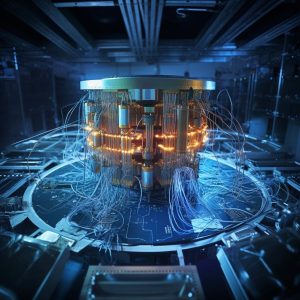New Breakthrough in Quantum Computing Promises Faster Processing
In an exciting development for technology enthusiasts and researchers alike, scientists have made a significant breakthrough in quantum computing. This new advancement promises to enhance processing speeds and efficiency, paving the way for a future where quantum computers can tackle complex problems much faster than traditional computers.
What is Quantum Computing?
Quantum computing is a type of computing that uses the principles of quantum mechanics to process information. Unlike classical computers, which use bits as the smallest unit of data (represented as 0s and 1s), quantum computers use quantum bits, or qubits. Qubits can represent and store information in multiple states at once, thanks to a property called superposition. This allows quantum computers to perform many calculations simultaneously, potentially solving problems that are currently impossible for classical computers.

The Breakthrough Explained
The recent breakthrough involves the development of a new type of programmable quantum processor. This processor can encode up to 48 logical qubits and execute hundreds of logical gate operations. This achievement is crucial because it represents a significant step towards creating stable and scalable quantum computers that can operate reliably in real-world scenarios.
Researchers from Harvard University, MIT, and QuEra Computing collaborated on this project. Their work demonstrates the first large-scale algorithm execution on an error-corrected quantum computer. This means that the quantum processor can perform complex calculations while minimizing errors, a major challenge in the field of quantum computing.
Importance of Error Correction
Error correction is vital in quantum computing because qubits are sensitive to their environment. They can easily lose their information due to interference from external factors. The new processor uses advanced error correction techniques to ensure that calculations remain accurate. This advancement could lead to more reliable quantum computers that can be used in practical applications.
Real-World Applications
The implications of this breakthrough are vast. Quantum computers have the potential to revolutionize industries such as medicine, finance, and materials science. For example, they could help researchers develop new drugs by simulating molecular interactions much faster than current methods allow. In finance, quantum computers could optimize trading strategies and risk assessments, leading to more efficient markets.
Additionally, quantum computing could play a crucial role in addressing global challenges like climate change. By modeling complex systems and predicting outcomes more accurately, quantum computers can assist in developing solutions to pressing environmental issues.
Challenges Ahead
Despite this promising breakthrough, challenges remain. Quantum computers must become more stable and scalable to be widely adopted. Researchers are actively working on improving the technology and reducing the size and cost of quantum processors. The goal is to create systems that can be used in everyday applications.
Leading companies in the tech industry, including IBM, Google, and Microsoft, are heavily investing in quantum computing research. IBM, for instance, has introduced a roadmap for scaling quantum processors, aiming to increase the number of qubits significantly over the next few years. This ongoing investment indicates a strong belief in the potential of quantum computing.
Looking to the Future
As researchers continue to make progress, the future of quantum computing looks bright. The recent breakthrough serves as a stepping stone toward realizing the full potential of this technology. With further advancements, quantum computers may soon become a common tool in various fields, transforming how we solve complex problems.
In conclusion, the new programmable quantum processor represents a significant leap forward in quantum computing. By enhancing processing speeds and reducing errors, this breakthrough opens up a world of possibilities for future applications. As scientists and engineers work together to overcome remaining challenges, we can expect to see exciting developments in the coming years.

